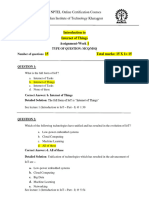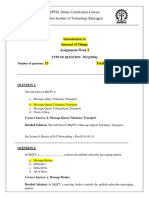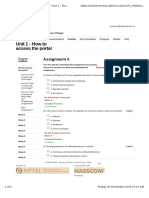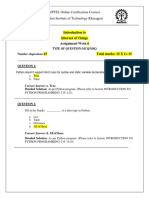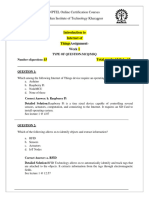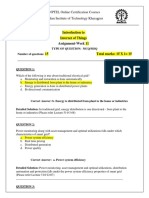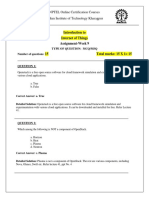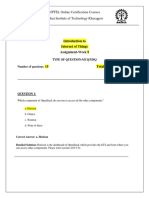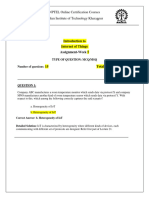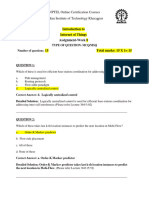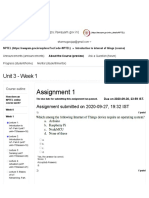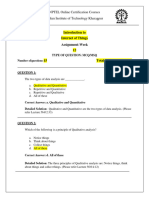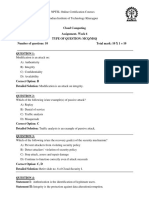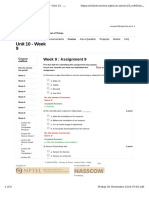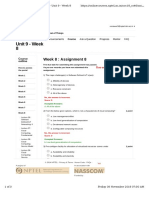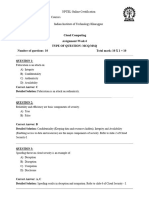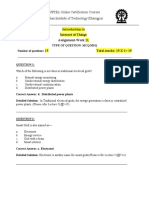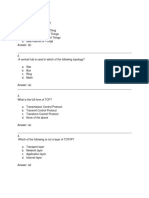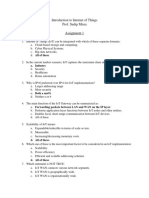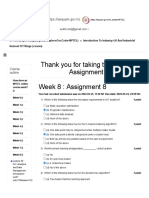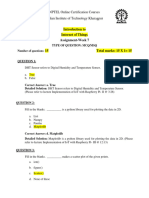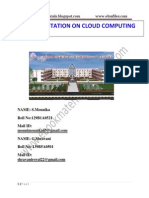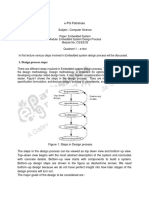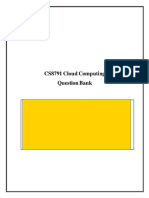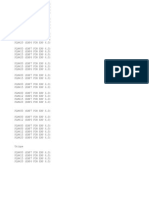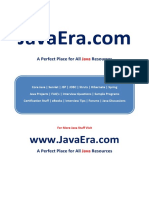0% found this document useful (0 votes)
626 views8 pagesAssignment W2
This document contains 15 multiple choice questions from an online certification course on Introduction to Internet of Things from NPTEL. The questions cover topics on MQTT, CoAP, XMPP, AMQP and IEEE 802.15.4 connectivity standards that are important protocols and technologies for IoT networking. Detailed explanations are provided for each question to help learners understand the concepts.
Uploaded by
JAYARAMAKRISHNA DCopyright
© © All Rights Reserved
We take content rights seriously. If you suspect this is your content, claim it here.
Available Formats
Download as PDF, TXT or read online on Scribd
0% found this document useful (0 votes)
626 views8 pagesAssignment W2
This document contains 15 multiple choice questions from an online certification course on Introduction to Internet of Things from NPTEL. The questions cover topics on MQTT, CoAP, XMPP, AMQP and IEEE 802.15.4 connectivity standards that are important protocols and technologies for IoT networking. Detailed explanations are provided for each question to help learners understand the concepts.
Uploaded by
JAYARAMAKRISHNA DCopyright
© © All Rights Reserved
We take content rights seriously. If you suspect this is your content, claim it here.
Available Formats
Download as PDF, TXT or read online on Scribd
/ 8







